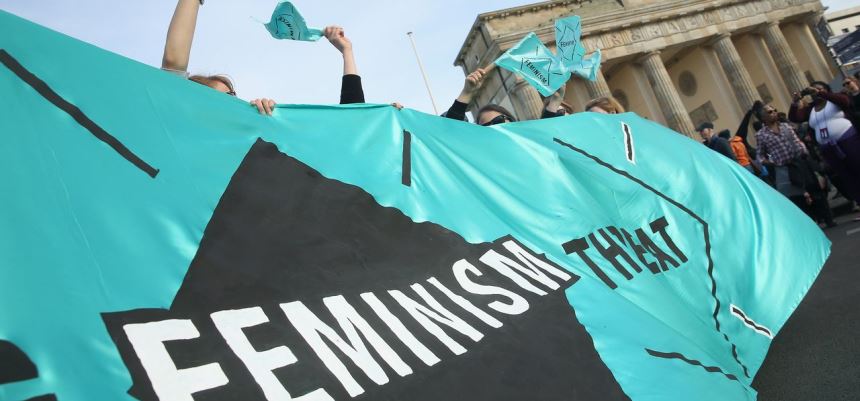by Emily Crockett on March 8, 2016.
March 8 is International Women’s Day, celebrated in today’s Google Doodle with a video asking women all over the world to finish the sentence, “One day I will…”
The answers run the gamut from personal dreams like “play in the Major Leagues” to more global aspirations like Malala Yousafzai’s wish to “see every girl in school.” And like International Women’s Day itself, the video is both a celebration of women’s lives and achievements, and a call to action to make their lives better.
These days, it’s a corporate-sponsored global campaign to raise awareness of women’s issues worldwide.
But it has radical origins. The Socialist Party of America organized the first National Women’s Day in New York in 1909 to commemorate the 1908 strike of the International Ladies’ Garment Workers’ Union. (Women garment workers in America in the early 20th century had plenty of reasons to walk off the job, as the 1911 Triangle Shirtwaist Factory fire would tragically prove.)
Then National Women’s Day became International Women’s Day at the second International Conference of Working Women in Copenhagen in 1910, where more than 100 women from 17 countries decided to establish a worldwide day of celebration to press for working women’s demands.
In fact, the Russian Revolution has International Women’s Day to thank. The 1917 demonstrations by women demanding “bread and peace” sparked other strikes and protests, which led to the abdication of Tsar Nicholas II four days later and granted women the right to vote.
International Women’s Day became a more popularized holiday after 1977, when the United Nations invited member states to celebrate it on March 8.
Since 2001 the holiday has had a sponsored website and an annual theme. This year’s theme, #PledgeForParity, encourages individuals and organizations to sign a “parity pledge” to commit to promoting gender equality in daily life and in the workplace.
What does gender parity look like worldwide?
Not great.
The World Economic Forum ranks 142 countries on women’s equality on a scale of 0 (no equality) to 1 (full equality).
The highest score of all is Iceland, clocking in at 0.881. Definitely not bad, but not fully equal either.
The United States is 28th, with a score of 0.740 — a pretty big drop from its 20th place finish in 2014.
Dead last is Yemen, at 0.484.
The score is based on many factors, like how many women participate in the workforce and how well they’re paid compared to men; health and educational outcomes; and political empowerment and representation in government.
The United States, of course, doesn’t struggle with the same abysmal maternal mortality rates, rampant human rights abuses, and other challenges that impoverished developing countries do. But poverty and economic inequality hit women harder no matter where they live.
According to the United Nation’s annual report on the progress of the world’s women, the worldwide gap between women and men remains particularly stubborn on issues of work. Women do more unpaid household work than men, and get paid less when they do work in the formal economy alongside men.
 (UN Women)
(UN Women)How do we improve worldwide gender parity?
This is a complicated question that international aid organizations and domestic advocates alike spend a lot of time on. Specific solutions will vary from problem to problem and region to region.
But the answers boil down to money, power, and will.
Spending more on international aid directed at women and girls can help them rise out of poverty and bring their families and communities up with them.
Spending more on social safety net programs like paid family leave and universal childcare helps women participate more equally in the workforce, and spares them the impossible choice between making a living and caring for their family.
Helping women gain political power can help empower other women and girls, and help ensure that women’s issues get priority in policymaking.
But it takes political will to change how money and power are distributed, and political will is often held hostage by people who already have money and power. Historically, women have not been those people. That’s why International Women’s Day came to exist in the first place, and why it’s still relevant today.
